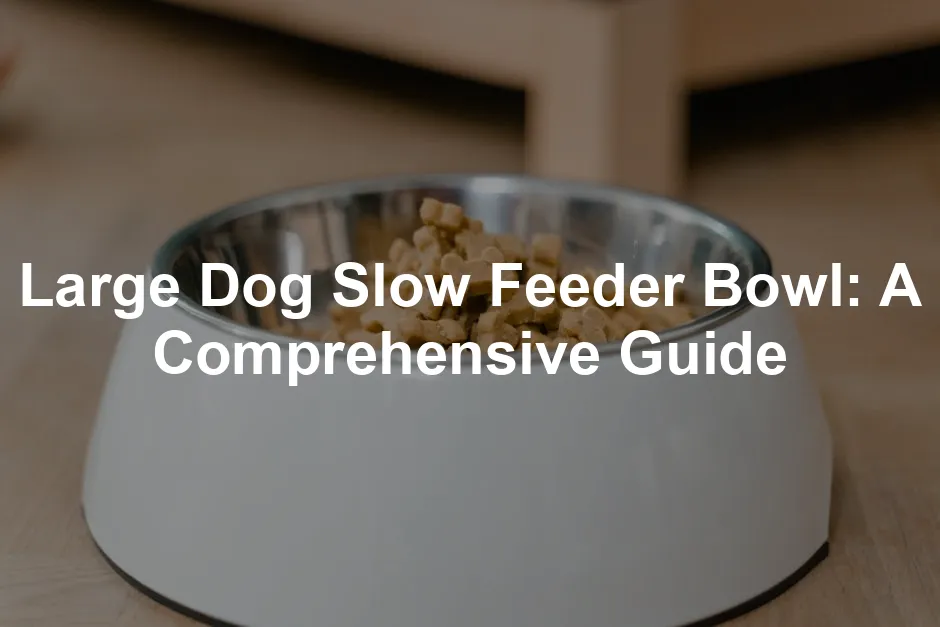Introduction
Many dogs eat too quickly, which can be harmful. Slow feeder bowls are essential for large dogs. They promote better digestion and overall health, preventing issues like bloating.
Summary and Overview
This article aims to inform dog owners about slow feeder bowls for large dogs. Fast eating can lead to serious problems like choking or bloating. By using slow feeders, you can improve mealtime enjoyment and encourage healthier eating habits. Slow feeders not only help prevent these health risks but also turn mealtime into a fun, engaging experience. Dogs can savor their food and enjoy the process, leading to a happier and healthier life.

Why Do Large Dogs Need Slow Feeder Bowls?
Understanding Fast Eating in Dogs
Large dogs often eat quickly due to their natural instincts. In the wild, they compete for food, leading to rapid consumption. Unfortunately, this behavior carries health risks. Fast eating can cause gastric torsion, a life-threatening condition that can twist the stomach. Additionally, dogs that eat quickly are more prone to obesity, as they might not recognize fullness. In fact, studies show that dogs who gulp their food have a higher chance of experiencing digestive issues.
To mitigate these risks, slow feeder bowls are crucial. They encourage dogs to take their time and chew properly. By promoting slower eating, these bowls can significantly reduce the chances of bloat and choking. It’s essential to assess your dog’s eating habits and consider whether a slow feeder bowl could help improve their health. Consider the Outward Hound Fun Feeder Slow Dog Bowl, which is designed to slow down your pup’s eating and promote healthier habits!
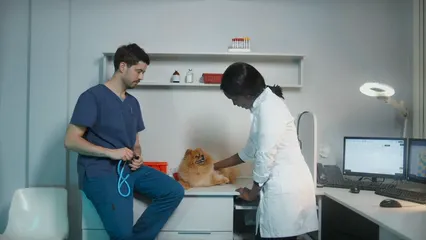
Benefits of Using a Slow Feeder Bowl
Health Benefits
Using a slow feeder bowl offers several health advantages for large dogs. One of the primary benefits is improved digestion. By encouraging dogs to eat at a slower pace, these bowls help them chew their food properly. This process aids in breaking down food, which facilitates better nutrient absorption.
Slow feeders also reduce the risk of bloat and choking. Fast eaters often gulp air along with their food, leading to discomfort and potentially serious health issues. By slowing down their eating, you can help prevent these risks. If you’re looking for a reliable option, check out the Dogit Go-Slow Bowl—a fantastic choice for dogs that need to take it slow!
Moreover, slow feeder bowls support weight management. Dogs that eat quickly may not recognize when they are full. A slow feeder allows them to take their time, which can help control portion sizes and prevent overeating. For the best results, consult your vet for personalized advice on using slow feeders for your dog’s dietary needs.
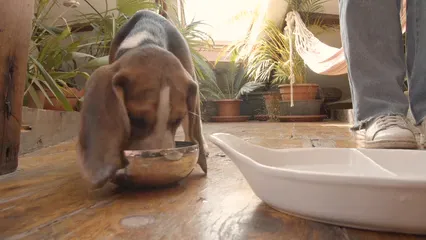
Mental Stimulation
Slow feeders aren’t just about physical health; they also provide essential mental stimulation for dogs. These bowls turn mealtime into a fun challenge. Dogs must figure out how to navigate the obstacles within the bowl to access their food. This engaging activity keeps their minds active and reduces boredom.
Mental stimulation is vital for a dog’s overall well-being. Just like humans, dogs can become anxious or restless without enough mental engagement. Using a slow feeder during meals helps enhance their problem-solving skills while satisfying their natural instincts. For an extra layer of fun, consider adding a LickiMat for Dogs to your dog’s routine, which encourages licking and can help calm them during mealtime.
Incorporating slow feeders into your dog’s daily routine can significantly improve their mental health. It transforms mealtime into an interactive experience, ensuring your furry friend stays entertained and happy.

Types of Large Dog Slow Feeder Bowls
Interactive Puzzle Bowls
Interactive puzzle bowls are designed to make mealtime challenging and engaging for your dog. These bowls feature unique designs with ridges, mazes, or obstacles that encourage your pet to work for their food. Instead of gulping down meals, dogs must navigate these features, promoting slower eating.
Popular brands include Outward Hound and PetSafe. The Outward Hound Fun Feeder, for example, has a maze-like structure that can slow down eating by up to 10 times. Its non-slip base ensures the bowl stays in place while your dog is eating. Want to keep your dog entertained? Try the PetSafe SlimCat Interactive Toy and Feeder for an added layer of fun!
Puzzle feeders not only help prevent choking and bloating, but they also provide mental stimulation. By engaging your dog’s problem-solving skills, these bowls turn each meal into a fun activity.
Ready to find the perfect puzzle bowl for your furry friend? Check out our top-rated interactive dog bowls for large dogs!
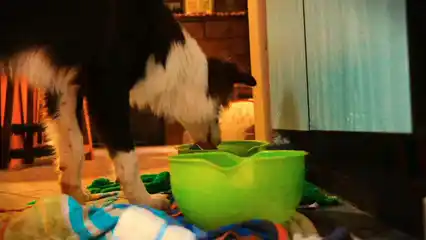
Elevated Slow Feeders
Elevated slow feeders are a fantastic option for large dogs. These bowls are positioned higher off the ground, making it easier for your pet to eat comfortably. This ergonomic design can significantly benefit dogs with joint issues or older pets that struggle with bending down.
Health advantages include reducing strain on the neck and joints. Elevated bowls can promote better posture during meals. Additionally, they can help facilitate digestion by allowing food to flow more naturally into the stomach. If you’re interested, check out the PetFusion Elevated Dog Bowl, which is perfect for ensuring your dog eats comfortably!
When choosing an elevated slow feeder, look for options tailored for large breeds. Many products come in various heights and sizes to suit your dog’s needs.
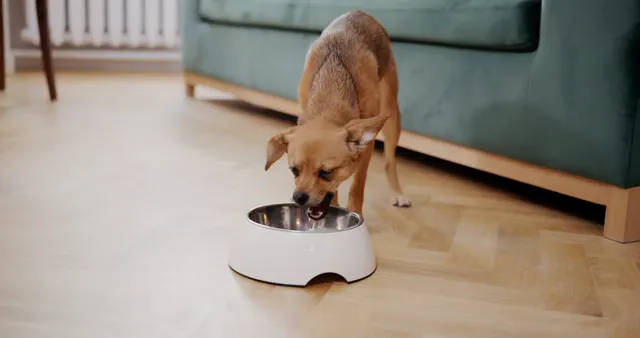
Traditional Slow Feeders
Traditional slow feeders are designed to slow down your dog’s eating pace. They often feature raised ridges or unique patterns inside the bowl. This design encourages dogs to take smaller bites and chew their food thoroughly.
When choosing a traditional slow feeder, look for certain features. First, consider the bowl’s material. Durable options include plastic, stainless steel, or ceramic. Each material has its pros and cons. Plastic is lightweight but may wear out faster. Stainless steel is more durable and easier to clean. Ceramic can be heavy but adds a stylish touch.
Another aspect to consider is the design. Some bowls have intricate patterns that create fun challenges for your dog. Others may have simpler designs but still effectively slow down eating. The right bowl depends on your dog’s eating habits and preferences.
While traditional slow feeders can reduce the risk of choking and bloating, they may not work for all dogs. Some pets might still find ways to eat quickly. Therefore, it’s essential to monitor your dog during mealtime. For top-rated traditional slow feeders, check out options like the Dogit Go-Slow Bowl or the Tuff Pupper Dog Bowl. These choices effectively promote slower eating habits while keeping your furry friend engaged.
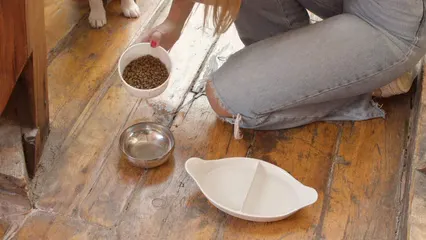
DIY Slow Feeders
Creating a DIY slow feeder can be a fun and cost-effective project. There are many creative ideas to help your dog slow down at mealtime. One simple option is to use a muffin tin. Place your dog’s food in the cups, making it harder for them to gulp down their meal.
Another idea is to fill a cardboard box with crumpled paper or towels. Hide your dog’s food among the layers, encouraging them to dig and search for their meal. This method keeps them entertained while promoting slower eating.
You can also repurpose items like a plastic bottle. Cut holes in the bottle and fill it with kibble. Your dog must roll the bottle to get the food out, making mealtime a game. Just ensure the materials are safe and dog-friendly. To make cleanup easier, consider using PetFusion Waterproof Dog Bed Cover to protect your surfaces from any spills!
When making a DIY slow feeder, consider safety first. Avoid sharp edges and toxic materials. Supervise your dog while they use the homemade feeder to prevent any accidents. Have you tried making a slow feeder? Share your DIY experiences in the comments!
Customer Reviews and Testimonials
Real Experiences with Slow Feeder Bowls
Many dog owners share positive experiences using slow feeder bowls for their large dogs. One customer mentioned how their Great Dane, known for rapid eating, now takes twice as long to finish meals. They appreciated the bowl’s design, which kept their dog engaged and reduced the risk of choking.
Another user highlighted the importance of the non-slip base. Their Labrador often tipped traditional bowls over, but with a slow feeder, mealtime became mess-free. This owner also noted improved digestion in their dog, leading to fewer stomach issues. If you’re looking for a vacuum that can handle pet hair, consider the Bissell Pet Hair Eraser Vacuum—it’s a lifesaver!
However, some reviews mention challenges. One person found that their dog quickly learned to navigate the bowl’s design, returning to fast eating. They suggested rotating different styles to keep their pet challenged. Another user mentioned that while the bowl worked well with dry kibble, it wasn’t as effective for wet food, which often got stuck.
Overall, these testimonials emphasize the benefits and challenges of slow feeder bowls. Many recommend trying different types to find the best fit for your dog’s eating habits. Have you tried a slow feeder bowl? We would love to hear your experiences in the comments!

Conclusion
Slow feeder bowls are essential for the health and happiness of large dogs. They help prevent fast eating, reducing risks like bloating and choking. By encouraging dogs to savor their meals, these bowls promote better digestion and overall well-being. If your dog struggles with rapid eating, consider investing in a slow feeder bowl to enhance their mealtime experience. Your furry friend will thank you! Learn more about dog health issues that can arise from poor eating habits.
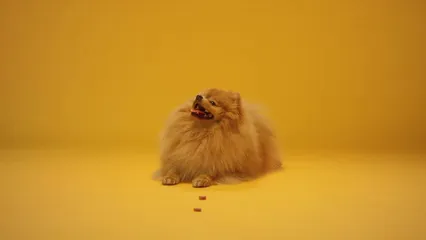
For further enrichment, why not indulge your pup with a KONG Classic Dog Toy? It’s a great way to keep your dog entertained while you’re busy!
Please let us know what you think about our content by leaving a comment down below!
Thank you for reading till here 🙂
All images from Pexels

